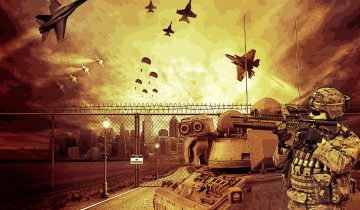The Unforeseen Cost of State Wide Bandh Called In Wake Of Bhima-Koregaon incident

Background:
After the festivities of the new year’s eve, Maharashtra had a gloomy start to the year. iA cycle of events was put into motion which exposed the deep-rooted crevices in the Indian society. The ugly monster named ‘Caste’ reared its ugly head to remind us of the truth of the current Indian society. This has set in motion a vicious cycle of violent staged ‘Pro-Dalit’ protests across India.
The Battle of Bhima Koregaon
A statewide bandh was called in Maharashtra on 3rd January by Dalit groups in protest of Skirmishes at Bhima-Koregaon. Bhima-Koregaon (or Koregaon Bhima ) is a village on the banks of Bhima river in the state of Maharashtra, This village has a historical importance: Bhima-Koregaon is a flashpoint in the history of Dalit movement in India. It is the site of the famous battle between The Peshwas and an East India company regiment consisting of soldiers from ‘Mahar’ community. The battle took place on 1st January 1818. The Peshwai regime was characterized by socio-political oppression of Dalits, and the battle symbolizes the valiant fight of Dalits against oppression by the Peshwas.
Who were the Mahars?
According to history, Members of the Mahar community were positioned in administration and Military roles, amongst members of the upper caste, yet they were considered as untouchables. The Maratha king Shivaji had recruited members of Mahar community to the Maratha army. However, their relationship went downhill after Peshwa king Bajirao insulted and rejected the offer of Mahars to serve in Peshwa army. The Mahars were subjected to persecution and various Injustice under the Peshwa regime. During the decline of Peshwa regime and the Rise of the British Empire, a battle was fought at Bhima Koregaon for the control of Pune. The larger force of Peshwa was facing a smaller force of East India company constituted largely of Mahars. Despite the smaller force, the battle was decisively won by the East India company forces, paving the way for the end of Peshwa rule in the Deccan.
The Tradition of Commemoration:
In the memory of fallen soldiers, the British Empire had installed an obelisk with the names of fallen soldiers including 22 members of the Mahar community. The tradition of the annual commemoration of the Battle at Bhima-Koregaon started after the visit of Iconic Dalit leader BR Ambedkar in 1927. Continuing the tradition, every year people from across the state gather at the site to celebrate the battle. On January 1, 2018, the 200th anniversary of the battle was celebrated. This year, the celebrations were tarnished by skirmishes involving fringe elements, thereby triggering a sequence of events. Right-wing groups protested the event as “anti-national” and “casteist,” having instigated, according to reports, a crowd of 1500-2000 people that gathered on neighboring villages and pelted stones on Dalits, which resulted in violent clashes.
Bandh Politics
Bandh: The Oxford dictionary defines it as a General strike popularly used in South Asian countries. Today, the word Bandh is used by political hooligans to display their strength and propagate violence to subjugate the weaker section of the society, namely ‘The common man” who spends his life day in and day out to earn his living.
Jumping the bandwagon:
As is the case with every event in India, the issue was exploited for political mileage. The vacuum created by the absence of credible opposition to the rampaging national ruling party and apparent success in recent Gujarat elections; this event was viewed as launchpad for pro-dalit leaders Umar Khalid, Jignesh Mewani, and the new entrant Ambedkar’s grandson Prakash Ambedkar. It was a good opportunity to exhibit the strength and political influence of the Dalit community and thereby set the stage for upcoming elections, specifically Lok Sabha elections, in 2019. The opportunity to create a third political front as an alternative to the Ruling BJP and weak opposition Congress gave a glimmer of hope for separatist and Ambedkarite forces to garner a large vote bank and establish control over the political landscape of the country. The fire has also been stoked by inflammatory speeches and calls for forced bandhs, which eventually results in violent clashes and harassment of the common public.
The cost paid by the Common man:
A State-wide Bandh was called in protest of the violence at Bhima-Koregaon. The enforcement of Bandh triggered riots across Maharashtra, costing 1 life and 700Cr in damages to public property. A Bandh always has financial implications, but in today’s age of social media, this Bandh had a deeper effect on the social fabric of the cosmopolitan society. The hidden fault lines were out in the open. Fueled by biased coverage of events and WhatsApp forwards. Social media was exploited to spread hatred. Pro-dalit and Anti-dalit conversations gained mileage in offices, transports, colleges dividing people into two opposing camps. Friends became foes due to opposite views on the topics. The resentment bubbling to dangerous levels causing fault-lines to emerge in personal relations. The ‘unity in diversity’ image of Indian society was under threat.
Conclusion
Democracy thrives on the rights of the people to protest peacefully. However, when this right is misused and under the guise of protest, violence is propagated. It’s time the judiciary and legislature set accountability standards. We are entitled to hold opposing views and are entitled to use constitutional bodies to challenge opposing views, instead of setting fires to vehicles and holding lives of people to ransom. The mass media should exercise self-censorship while reporting on socially sensitive topics. People should be educated and trained to prevent misuse of social media and stop the spread of rumors. Police and Judiciary should be swift in punishing individuals involved in instigating violence, which would serve as a deterrent for prospective criminals.
“Until & unless people understand that such facades are staged to gain political mileage and exploit sentiments by driving a wedge in our peaceful Indian society, the progress of our country will always be under threat.”




